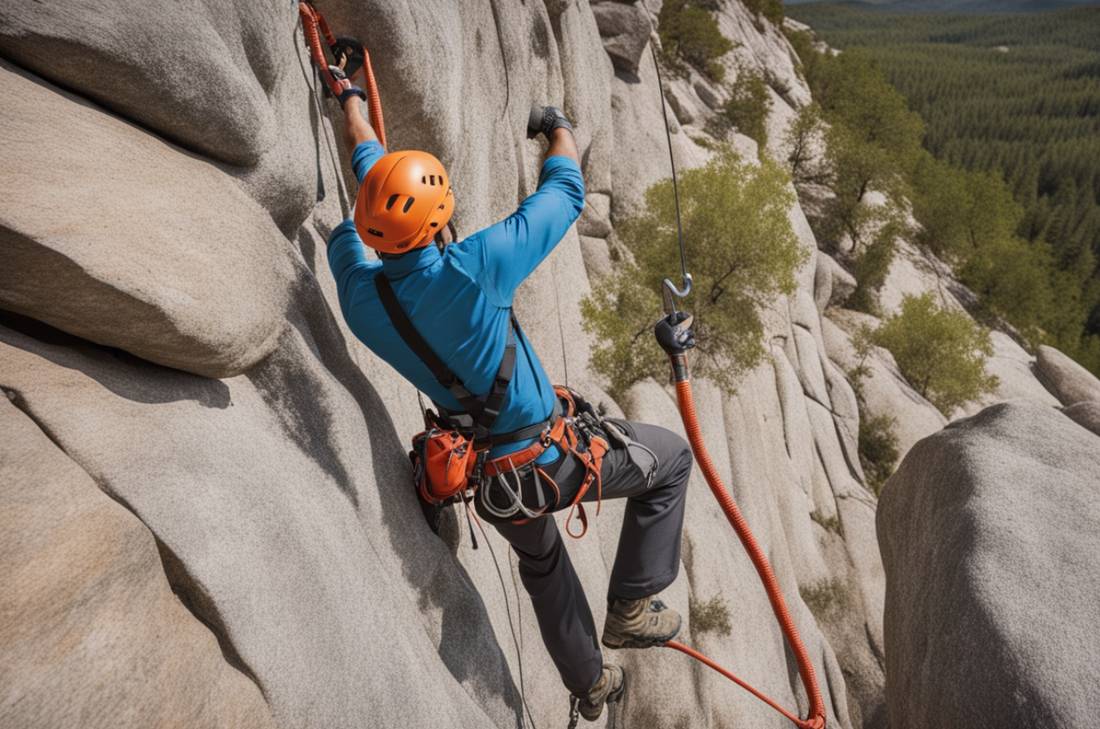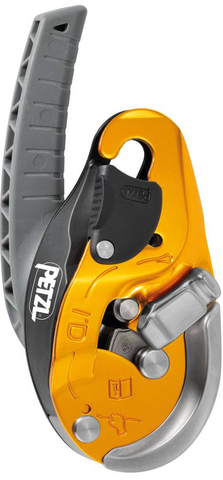
Are you looking to explore rappelling or enhance your climbing experience with the best climbing descender? Selecting the right climbing descender is crucial for your safety and overall enjoyment. This comprehensive guide will cover everything you need to know about climbing descenders, from their basic functions to the key features that make them reliable and safe. We'll also provide recommendations for the top climbing descenders in the market, along with safety tips, maintenance guidelines, and expert advice to help you make an informed decision.
Understanding Climbing Descenders: A Beginner's Overview
What are Climbing Descenders?
Climbing descenders, also known as rappel devices, are mechanical tools designed to control the rate of descent when rappelling or lowering oneself down a rope. They are essential for climbers, canyoneers, and rescue professionals, providing a controlled and safe means of descending from vertical surfaces.
Types of Climbing Descenders
Climbing descenders come in various types, including friction brake devices, auto-blocking belay devices, and figure-eight descenders. Each type offers specific advantages and is designed for different applications, so it's important to understand the differences before making a selection.
Basic Functions
The primary function of a climbing descender is to provide friction on the rope, allowing the user to control their descent speed. Additionally, some advanced descenders offer features such as auto-locking mechanisms and assisted braking systems for enhanced safety and control.
Key Features to Consider When Selecting a Climbing Descender
Rope Compatibility
Ensuring compatibility with the rope diameter you intend to use is crucial when choosing a climbing descender. Different descenders are designed to work optimally with specific rope diameters, so it's essential to check the manufacturer's specifications.
Weight and Portability
Considering the weight and portability of a climbing descender is crucial for outdoor enthusiasts who value lightweight gear. Compact and lightweight descenders are ideal for backpacking and alpine climbing, where every ounce matters.
Braking Mechanism
The type of braking mechanism employed by a climbing descender is a key factor in its performance and safety. Look for descenders with reliable friction control and smooth rope handling to ensure a controlled descent.
Durability and Construction
The durability of a climbing descender is paramount, especially for those engaging in rigorous outdoor activities. Quality materials and robust construction ensure that the descender can withstand the demands of challenging environments.
Top 5 Climbing Descenders for Outdoor Enthusiasts
Here are our top 5 climbing descender recommendations based on thorough research, user feedback, and expert reviews:
| Climbing Descender | Features |
|---|---|
| ISC D4 Descender | The NEW D4 Work/Rescue Descender features a unique and innovative cam action, which offers precise control at slow or fast speeds. The progressive cam works by way of one cam operating inside another cam. |
| Petzl Maestro | MAESTRO L is a descender designed for technical rescue operations. It facilitates manipulation of heavy loads, for lowering or hauling, and may be used in both the primary system or in a back-up belay. This versatility allows rescuers to adapt to any situation they may encounter on the rescue scene. |
| Yates ISC D5Y | The D5Y Descender allows for controlled descent at different speeds. A user can move slowly, or get going much quicker than they can on a Petzl ID. However, it still has the anti-panic in case a user pulls the handle too hard. |
| Petzl I'D Evac | The I’D EVAC self-braking descender is primarily designed for lowering from an anchor. The ergonomic handle is specifically oriented for managing a load from the anchor and offers comfortable descent control. |
| Petzl Rig Compact | RIG is a compact self-braking descender for rope access, designed for experienced users. It has an ergonomic handle that allows comfortable descent control. The AUTO-LOCK system allows users to easily position themselves at the work station without having to manipulate the handle or tie off the device. |
Safety Tips and Best Practices for Using Climbing Descenders
Proper Training and Instruction
Before using a climbing descender, ensure that you receive proper training and instruction from qualified professionals. Understanding the correct techniques and safety protocols is crucial for a safe and enjoyable rappelling experience.
Equipment Inspection
Regularly inspect your climbing descender for any signs of wear, damage, or malfunction. Ensure that all components are in good condition and that the descender operates smoothly before each use.
Double-Check Attachment and Knots
Always double-check the attachment of your climbing descender to the harness and the integrity of your knots before beginning your descent. Proper attachment is essential for your safety and security.
Controlled Descent Speed
Maintain a controlled descent speed by adjusting the friction on the rope using your descender. Avoid sudden movements or excessive speed to prevent accidents and ensure a smooth descent.

Maintenance and Care Guide for Your Climbing Descender Equipment
Cleaning and Lubrication
After each use, clean your climbing descender to remove dirt, debris, and moisture that may affect its performance. Additionally, apply lubrication as per the manufacturer's recommendations to keep moving parts functioning smoothly.
Storage Practices
Store your climbing descender in a dry and well-ventilated area, away from direct sunlight and extreme temperatures. Proper storage helps prevent corrosion and maintains the integrity of the descender's materials.
Periodic Inspection
Perform regular inspections of your climbing descender to identify any signs of wear, corrosion, or damage. Address any issues promptly and, if necessary, seek professional assistance for repairs or maintenance.
Expert Advice: How to Choose the Right Climbing Descender for Your Needs
Seek Professional Recommendations
Consult with experienced climbers, guides, or instructors to gain insights into the best climbing descender for your specific needs and skill level. Check out our selection of the best climbing descenders here.
Consider Personal Preferences
Take into account your personal preferences and the type of climbing or rappelling activities you most frequently engage in. The right climbing descender should align with your individual requirements and comfort level.
Test and Familiarize
Before venturing into challenging terrain, spend time testing and familiarizing yourself with your chosen climbing descender in a controlled environment. Understanding its operation and performance will enhance your confidence and safety during actual use.
In conclusion, selecting the best climbing descender involves careful consideration of key features, safety aspects, and personal preferences. By understanding the functions and types of climbing descenders, evaluating crucial features, and following safety guidelines and maintenance practices, you can ensure a rewarding and secure rappelling experience. Whether you're exploring rugged canyons or ascending alpine peaks, choosing the right climbing descender is an essential step towards elevating your outdoor pursuits.
Remember, the key to a successful and enjoyable climbing experience begins with the right gear, and your climbing descender is a crucial component that demands thoughtful selection and diligent care. Happy climbing!



0 comments